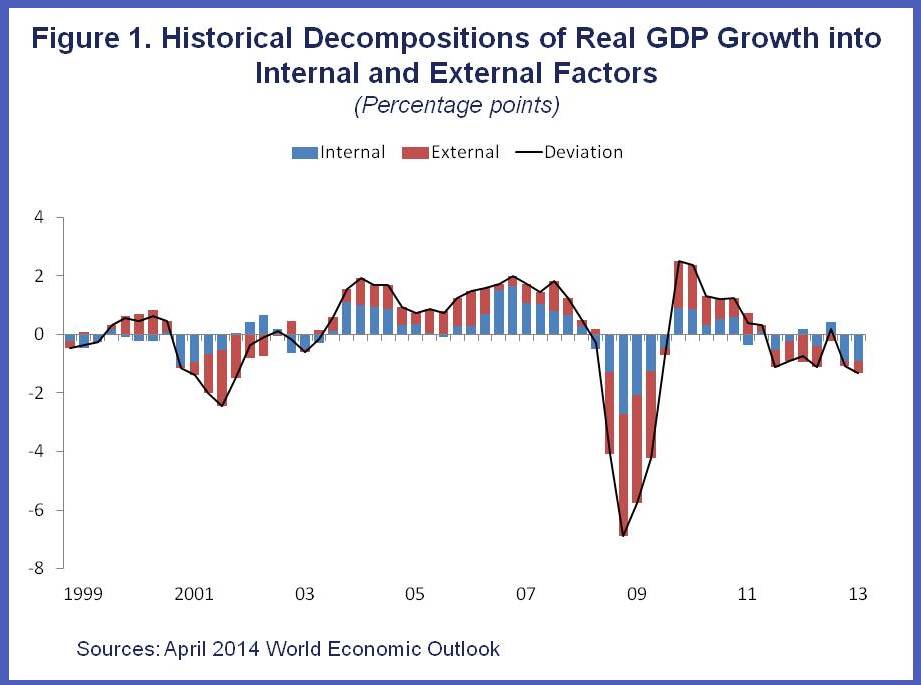Emerging markets have grown at a remarkable pace through most of the 2000s. They even rebounded strongly from the Great Recession, notwithstanding the sluggishness in advanced economies. Easy global financial conditions, rising commodity prices and beneficial terms of trade potentially compensated for weak external demand from the advanced economies.
But now, emerging market growth, while still strong, has begun to slow. This oddly coincides with an outlook for advanced economies that is improving, even if gradually. So what’s behind this dichotomy?
Emerging markets are adjusting to changes in the external environment. On the one hand, the incipient recovery in advanced economies is helping emerging markets, including through higher exports. On the other hand, the favourable external financing conditions are now beginning to reverse, implying a tougher financial environment for emerging markets. Then you have domestic factors, which appear to have pulled down growth in some emerging markets (see also IMF blog post on January 22, 2014, and December 18, 2013).
So how much have external conditions—such as growth in advanced economies and external financial costs, among others, affected emerging markets? And to what extent have domestic conditions influenced emerging market growth?
This is a key focus of our forthcoming Chapter 4 in the April 2014 World Economic Outlook. We show that, on average, external conditions tend to explain at least half of the growth variation in emerging markets. That said, there are considerable differences in the contribution of external factors across time (see figure) and across countries. The chapter also delves into the implications of China’s transition to a slower, even if more sustainable, pace of growth, and its impact on other emerging markets.
Overall, emerging markets will benefit from some external developments, but suffer from others. But if on top of this, the dampening effects from internal factors persist, growth in emerging markets could indeed adjust to a lower level than before, at least temporarily.
Check back on April 3rd for further insights on the interplay of external and internal factors on emerging market growth.
Watch the live webcast of the analytical chapters of the World Economic Outlook on Thursday April 3 at 9 am (EST) on www.imf.org.







